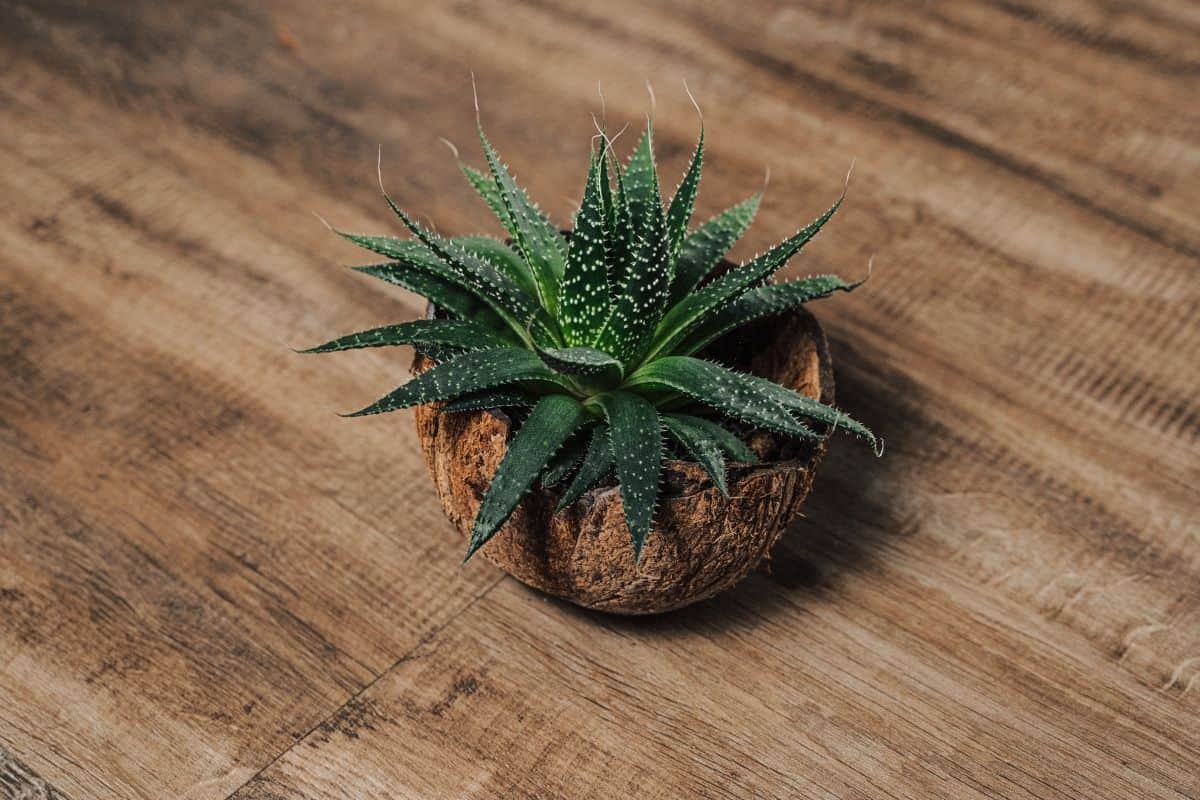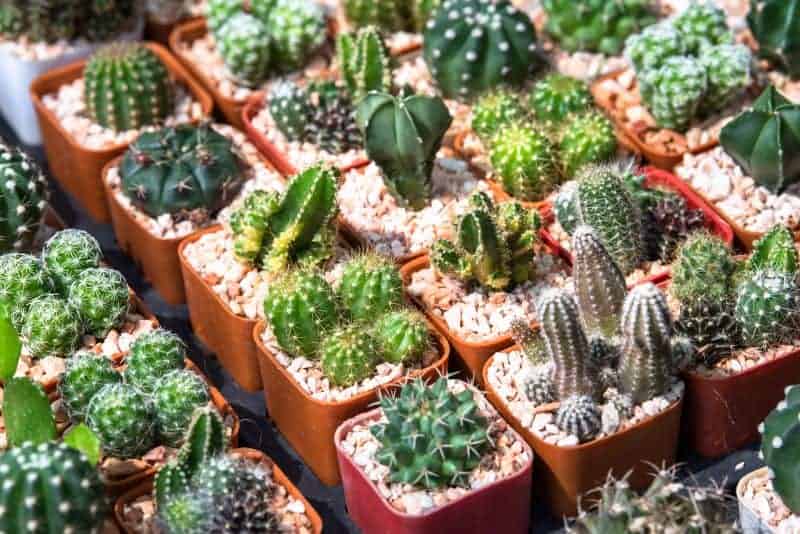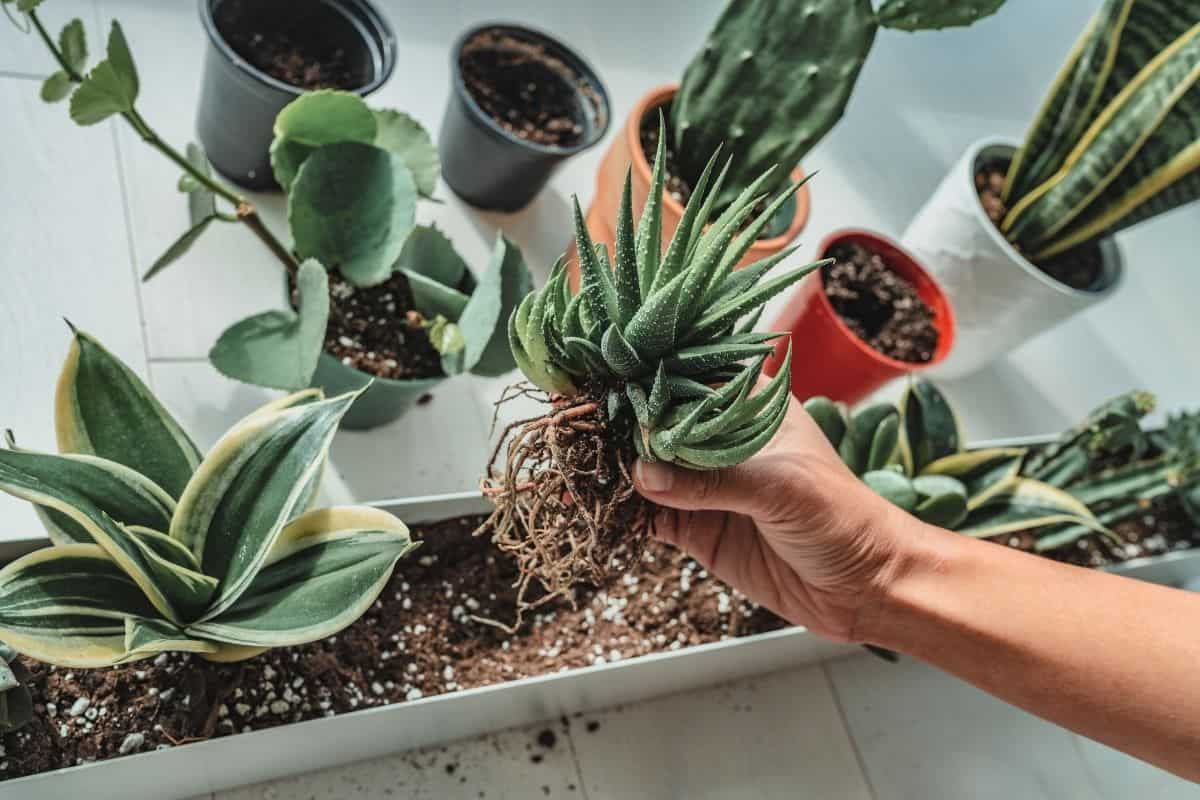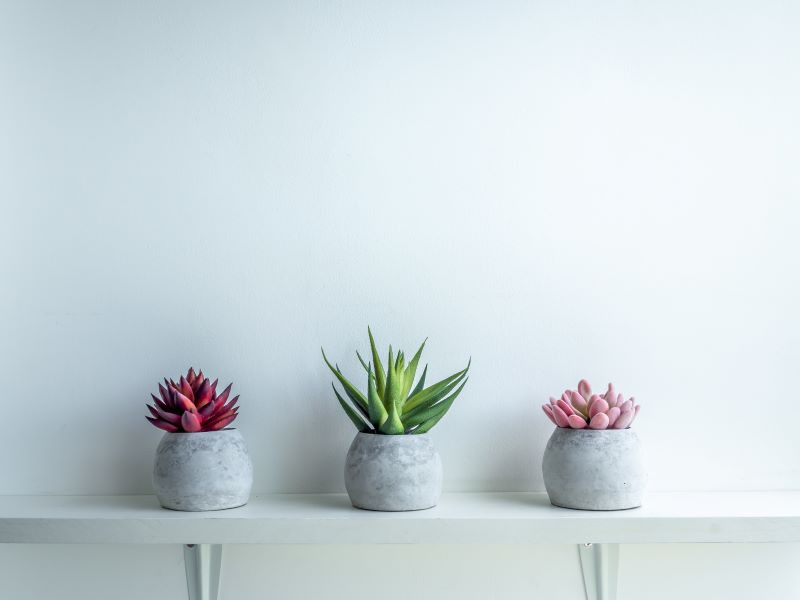
Succulents owe their popularity not only to their simple care, but to their versatility. Whether you have a huge garden or an empty space on your desk at work, succulents can be grown anywhere. You can even make a wreath or fairy garden out of your favorite succulents and cacti! However, projects like these typically require the use of smaller succulents.
So, you’ve picked out the perfect tiny succulents for your project or collection, but what happens when they get too big? Instead of replanting your garden every time your succulents outgrow it, there are a few steps you can take to keep your succulents as small as possible.
Related Article: How to Care for Indoor Succulents
Plant Small Species

It may seem obvious, but if you want to keep your succulents small, you need to make sure you’re planting smaller species. If you want your succulent to stay small enough to keep in a container on your desk, it’s best not to plant Agave mapisaga, which can grow up to eight feet tall. Succulents such as these are best suited for situations that call for tiny succulents.
Succulents in general tend to be slow growing plants, but by choosing succulents that stay small when they mature, you’re increasing your chances of success. Instead of trying to limit a plant’s growth, why not choose one that can thrive in that teacup-sized planter?
If you’re looking for small cacti, consider Mammillaria gracilis fragilis. Also known as the Thimble Cactus, this tiny cactus grows in clumps that will stay under three inches tall. One of the best features of this prickly but petite plant is that when tiny stem segments fall off, they can simply take root. Mammillaria bocasana ‘Powder Puff Cactus’ is also a great cactus for small spaces.
No products found.
See Also: How to Repot a Christmas Cactus
Provide Appropriate Care

Obviously, you want to provide your succulents with the appropriate care so that you don’t have a garden full of sad, droopy plants. Be sure to plant your succulents and cacti is a soil that is intended for use with drought-loving plants. Regular potting soil will retain too much moisture so avoid using soil intended for flowers and vegetables. You want soil that contains larger particles to allow for air flow and proper drainage.
You also want to make sure you provide your succulents with enough sunlight. Succulents that don’t get enough light tend to etiolate or stretch out. Etiolation doesn’t harm your plants, but it is unsightly, especially if you’re trying to keep them small. Most species of succulents and cacti enjoy bright light, but if you’ve purchased your plants from a nursery, you may need to slowly acclimate them to more light over a period of several weeks to prevent sunburn.
As always, watering is the most important step of succulent care, even when you’re trying to keep your succulents small. When size isn’t an issue, you want to follow proper succulent watering techniques, but when you’re trying to grow petite plants, it’s recommended to water them a little less frequently. You want your succulents to stay healthy, but you don’t want them to grow any faster than they have to.
Pruning

If you want to keep your succulents small, you may need to do a little pruning to keep them at the right size and shape. This is especially true if your succulents have etiolated, or stretched out, due to a lack of sufficient light. Unfortunately, once your plants have stretched out, there’s no way to fix it. As previously mentioned, etiolation isn’t harmful, but it’s not ideal when you’re trying to keep your succulents at a certain size. Regardless of whether your succulent has etiolated or simply grown to large, you can prune your plant back to a more manageable size.
Be sure to use sterile scissors or shears when pruning your succulents. Using clean tools ensures that you aren’t introducing any harmful bacteria or fungi into your plants. Anytime you cut a succulent, you’re leaving an open door to infection, so it’s essential that you make the process as safe as possible. If you’re trimming more than one plant, it’s also recommended that you sterilize your scissors between plants to prevent the spread of infection.
One of the greatest benefits of pruning your succulents is that the cuttings can be replanted elsewhere. Depending on the type of succulent, you may be able to plant either leaf or stem cuttings. Either way, the cuttings will be smaller than the mature plant, so you’ll be able to start your miniature plant project anew. Just make sure you give your cuttings a chance to callous before planting them in soil.
Root Confinement
In general, succulents are slow growing plants that tend not to have huge root systems anyway. However, by limiting the space in which your succulents’ roots can grow, you limit their size. If a plant can’t spread out enough to collect the nutrients necessary for growth, it’s not going to grow.
Planting your succulents in close quarters is one way of confining your succulents’ roots. By crowding your plants, you’re limiting their ability to grow without running into their neighbors.
This is particularly useful with projects like living walls or succulent wreaths where you want your plants close together anyway. Not only will the close quarters keep your succulents small, but the roots will grow together, preventing the project from falling apart.
If you’d prefer to plant your succulents and cacti one at a time, but still want to keep them small, consider using smaller containers. Planting your succulents in pots that will limit the spread of the root system will help keep your succulents at a more manageable size. However, it’s still important to use a container that will allow for proper drainage.
While smaller or more shallow containers may not retain as much water as larger pots, root rot can still develop if you don’t allow the soil to dry out completely between watering sessions. Rather than risk the health of your tiny succulents, it’s best to use a container with a drainage hole.

